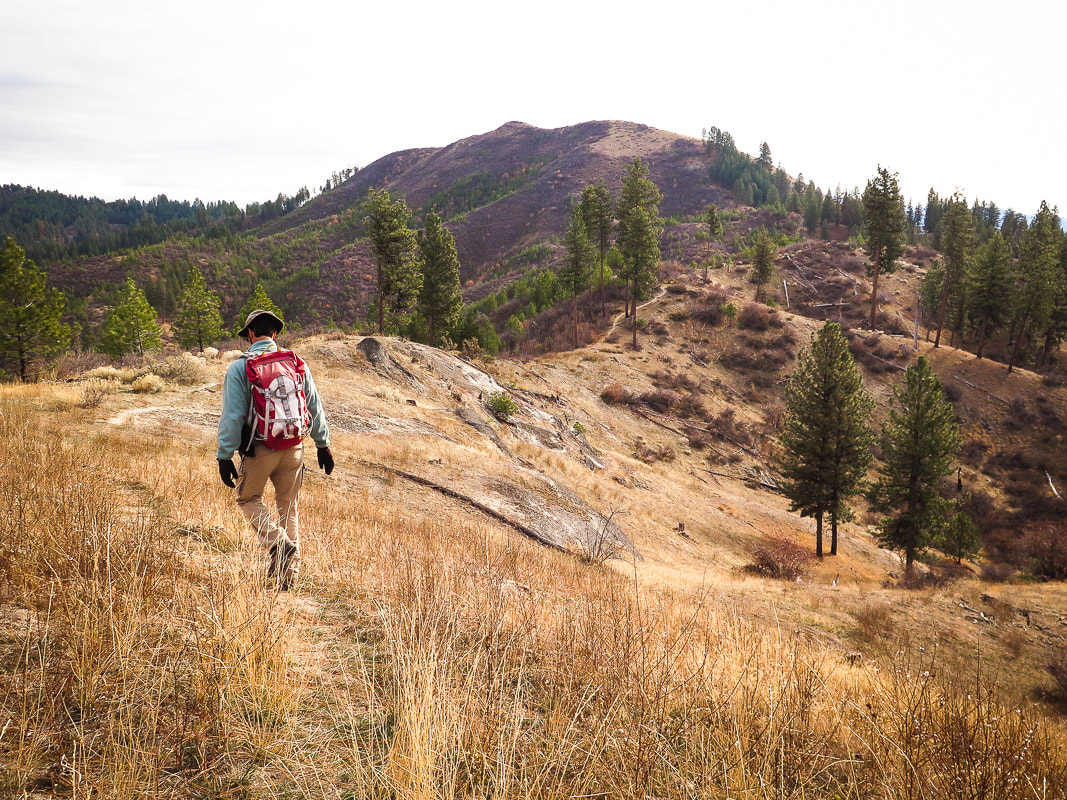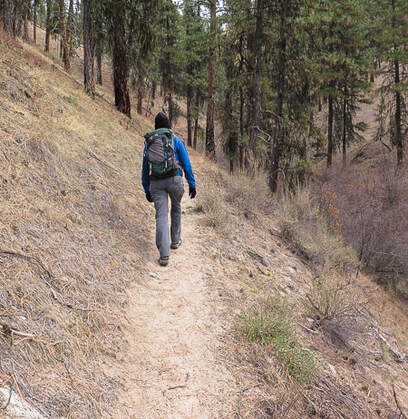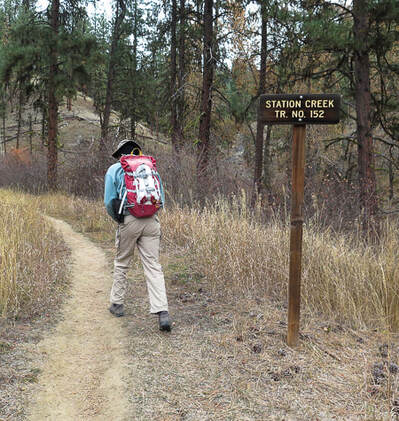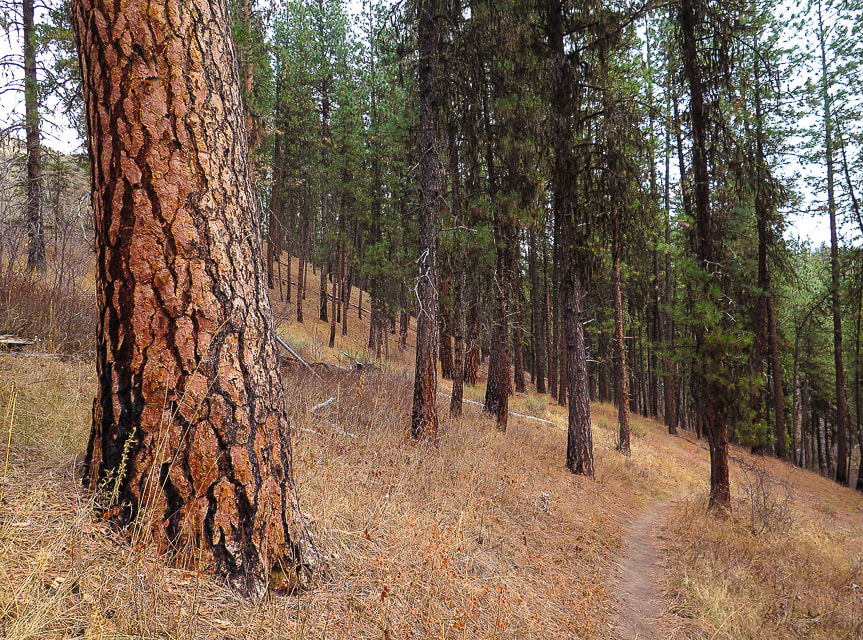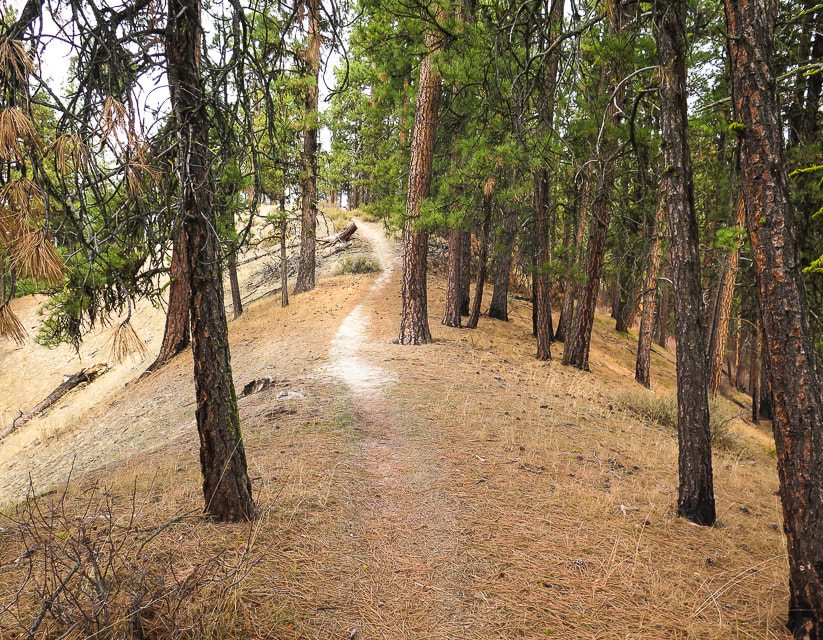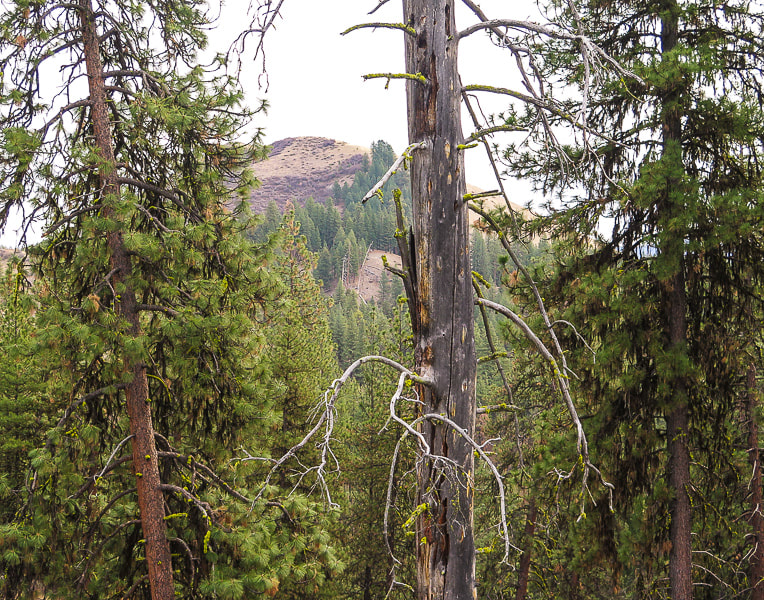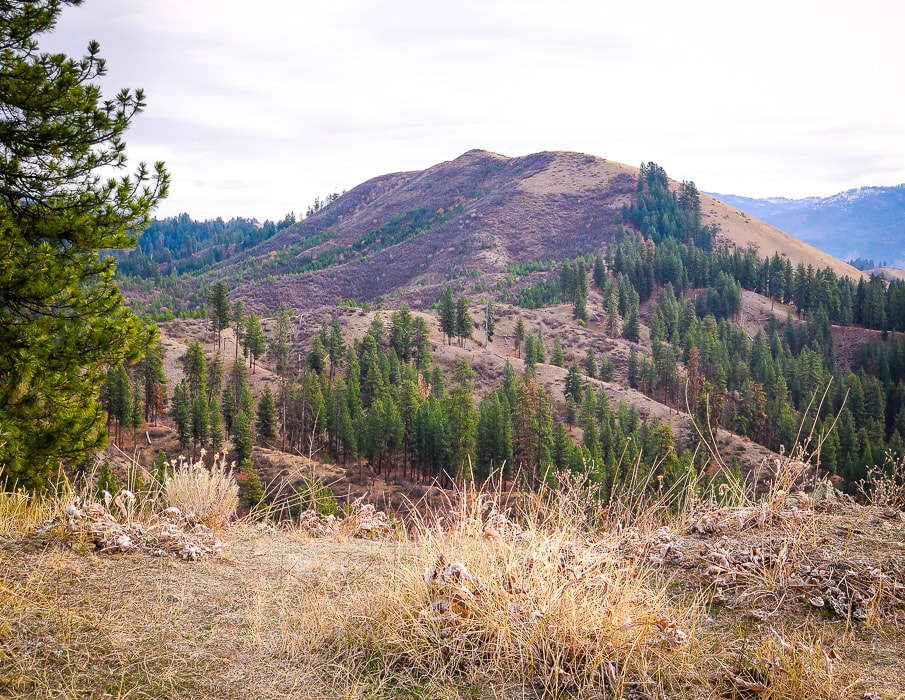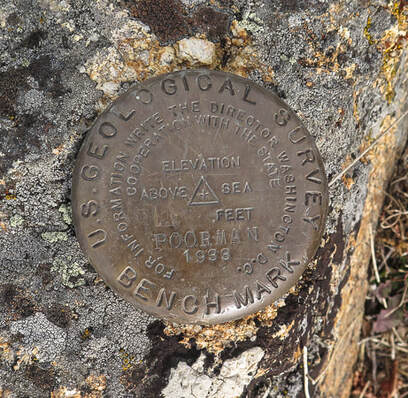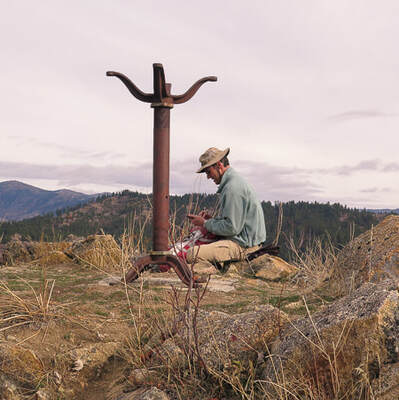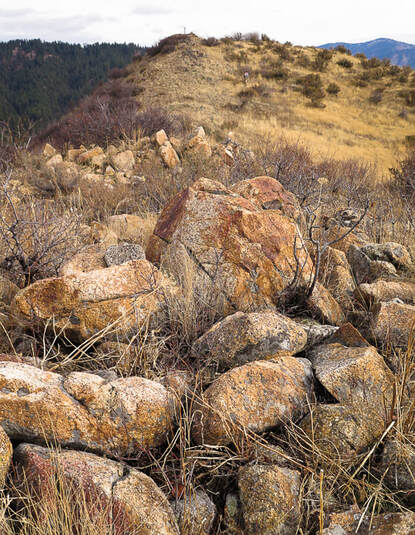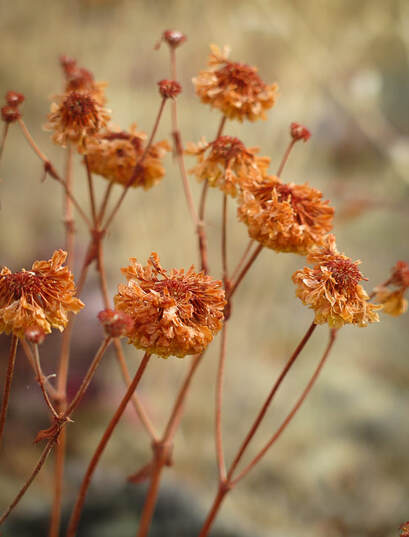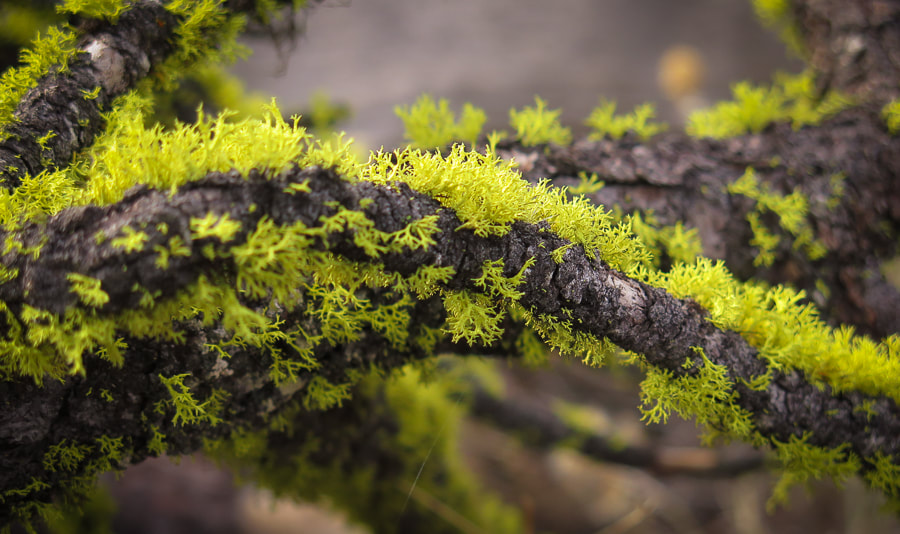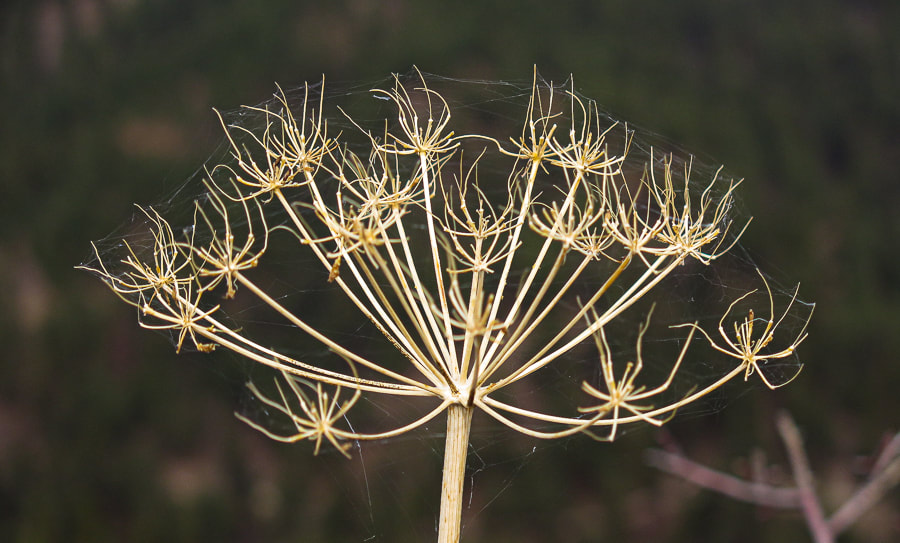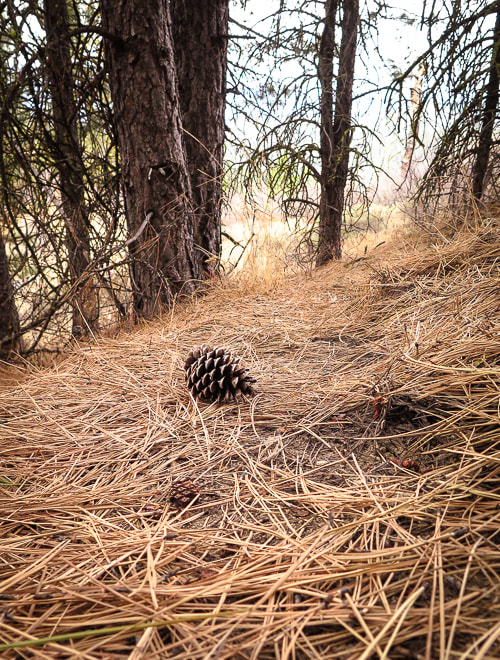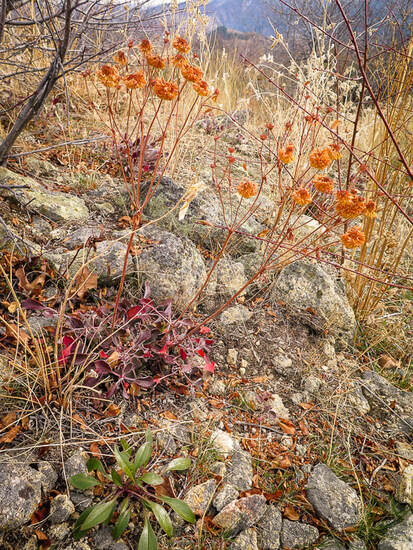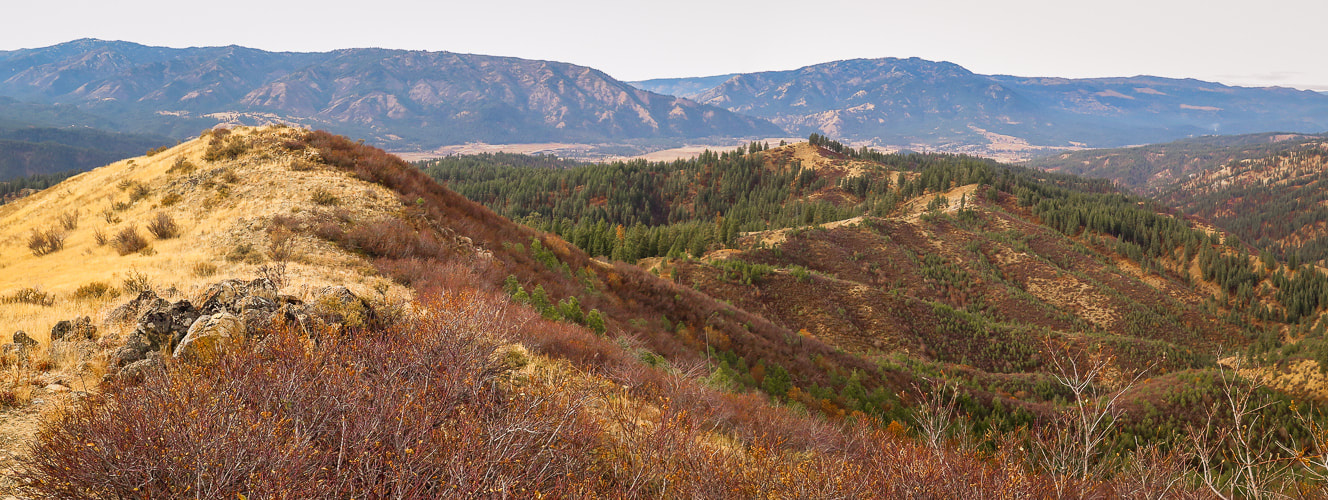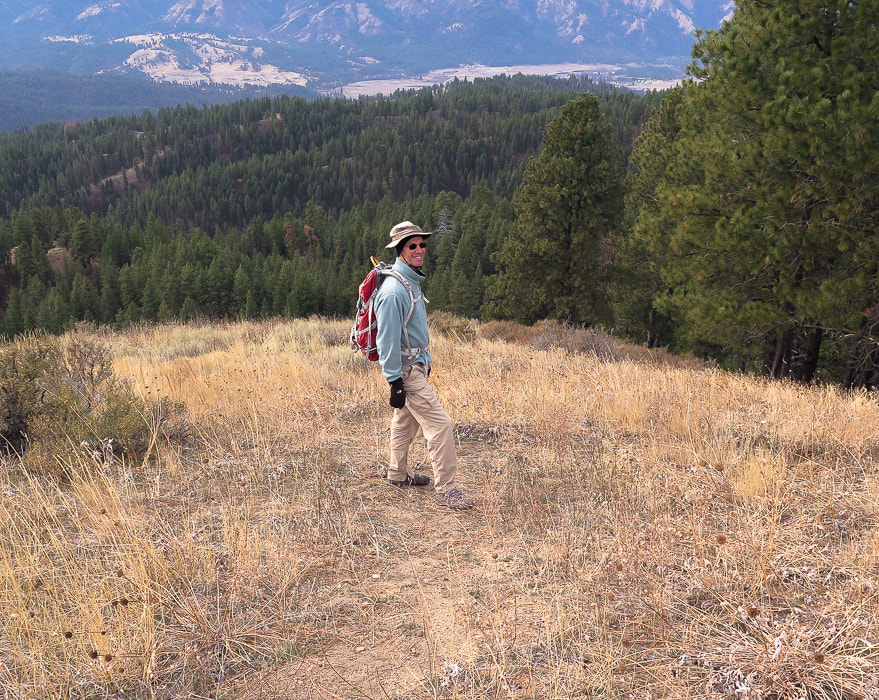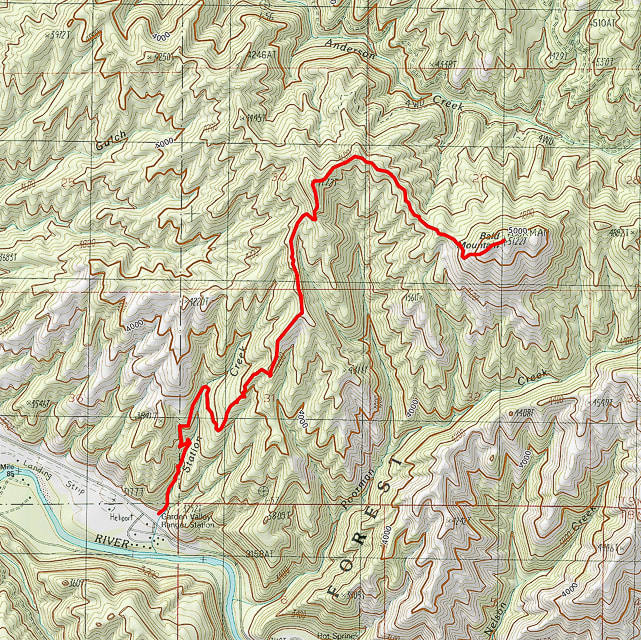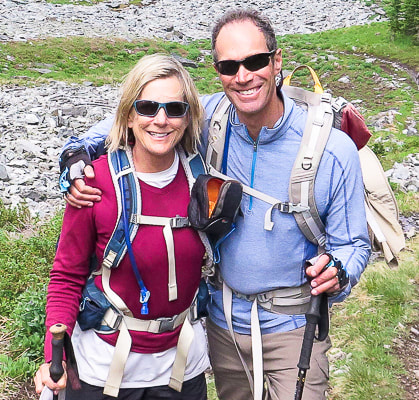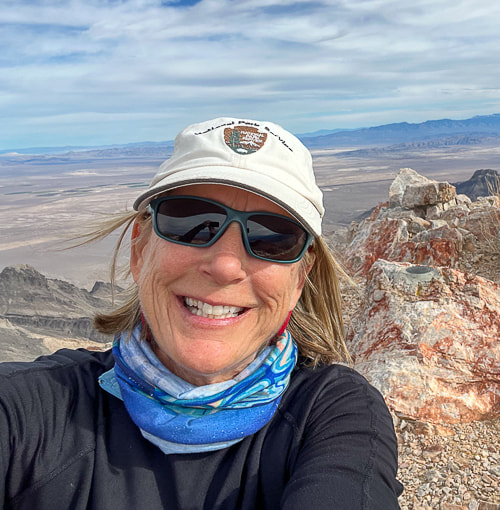|
From doorstep to summit in just a few hours, this hike close to Boise offers a quiet Ponderosa pine forest, a good climb and great views of Boise National Forest. Final approach to Bald Mountain's (aka Poorman) summit; Little Anderson watershed to the left and drainage into Poorman Creek to the right. Nice exposures of Idaho batholith granite. Elevation - 5,134 feet. Trip Stats:
Location: Southwest Salmon River Mountains in the Boise National Forest, with North Fork of the Payette River to the west and South Fork Payette River to the south. Just over one hour's drive from Boise, near Garden Valley, Idaho. Distance: 7.6 miles round-trip. Elevation gain: Trailhead = 3,190 feet, summit = 5,134 feet. Total net gain = 2,500 feet. Difficulty: Moderate Class 1 single track trail. Trail location: Station Creek Trail #152. Trailhead just across from Garden Valley Ranger Station on the Banks-Lowman Road, Hwy 17 (Wildlife Canyon Scenic Byway). Permit: None Map: Boise National Forest - U.S. Forest Service and USDA. See our GPS tracks on topo map below. Date Hiked: November 16, 2019. Alternate route: 2 loops below the summit - Stueby's Outdoor Journal. Summit location: 44.0815 -1158890 Geology: Atlanta Lobe of the Idaho Batholith; granodiorite and two-mica granite - Cretaceous (85-67 Ma). Boise National Forest - History and Culture. USDA One of Idaho's greatest assets is the ability to find forest solitude in a short amount of time. After an hour's drive north from Boise, we started our walk on the Station Creek Trail in the Boise National Forest's 2.5 million acres, weaving through a Ponderosa pine forest to a ridge with a view of Bald Mountain. The summit feels grander than its relatively low elevation would suggest. It stands high above Little Anderson Creek to the north, and Poorman Creek to the south, with views of snow-dusted Salmon River Mountains to the northeast. Everything is good on this adventure - beautiful drive, challenging grade on a relatively short distance with great views. "Poorman" is engraved on Bald Mountain's summit benchmark, a triangulation station established by the U.S. Geological Survey in 1933. The History of the Boise National Forest - 1905-1976, an informative document, covers many subjects from the area's Native Americans, to the creation and administration of the Boise National Forest, its resources and its settlement. The Sawtooth Forest Reserve was created in 1905 by President Theodore Roosevelt. A combination of the west portion of this reserve and the 1.5-million acre Payette Forest Reserve created the Boise National Forest July 1, 1908. Idaho is one of the top states that has a large percentage of publicly-owned lands - 62% of it under federal jurisdiction of BLM and Forest Service. This does not include state-owned land. The Payette River was named after Francois Payette, a French-Canadian Hudson Bay Company fur trapper who explored southwestern Idaho. Bald Mountain is tucked in between the main waterways of North Fork and South Fork of Payette River. The stately Ponderosa pine is easy to recognize because of its orange-brown bark arranged in large vertical plates. In the spring, the tree's sap produces a vanilla scent. The needles are 5-10 inches long and grow in clusters of three. Access the Station Creek trailhead just off the Banks-Lowman Highway, right across from Garden City Ranger Station and heliport, past Mile 12 and Boise National Forest sign. The trail treks north as it follows Station Creek, crosses it at 0.8 miles, then climbs the ridge that separates Station Creek and Poorman Creek. At mile 2.6, this ridge tops out at Point 4,772 with bare-topped Bald Mountain in full view. Single track over combination of pine needles and gravel on ridge between Station Creek and Poorman Creek leading to Point 4,772. View of Bald Mountain from ridge From point 4,772, hike 1.2 miles east/southeast to Bald Mountain's summit past some exposed granite outcrops. The trail becomes less defined as it traverses across the top of the watershed for Little Anderson Creek, then through a tall shady stand of Ponderosa pines. The trail then climbs the steep, open and grassy western slope to Bald Mountain's granite summit surrounded by the fall hues of red, yellow and orange senescent buckwheat and lomatium flowers. Bald Mountain stands above Garden Valley to the west and deep South Fork of the Payette River to the south and the snow-dusted Salmon River Mountains to the north. For a peak close to home, it feels and looks like wilderness - a quick nature fix. An iron stand bolted into cement on the summit looks like it might have supported something, or is merely a marker. I was unable to find information on this and the origin of the word "Poorman", although it could be in reference to previous mining activity. Many Ponderosa pine trunks are blackened from the 18,000-acre West Anderson fire that occurred due to a lightning strike in August of 1986. Four firefighters from New Mexico died when their truck tumbled down a dry creek bed near Crouch as they were driving from their fire camp. Map of Boise National Forest fire history. In the spring, this trail is bright with wildflowers, but autumn produces muted colors and textures, just as beautiful. There are two loops that can be hiked instead of summiting Bald Mountain (Stueby's Outdoor Journal). Poorman triangulation marker on Bald Mountain's summit placed in 1933. Autumn lomatium From the summit - view of Garden Valley to the west Descending just off summit - I Love Idaho! Our GPS tracks from Station Creek Trailhead to Bald Mountain Summit click on map for larger image References:
Boise National Forest Large Fire History, 1980-2018 (Map). https://www.idahofireinfo.blm.gov › southwest › documents › maps › BOF... Smith, E.M. 1986. History of the Boise National Forest, 1905-1976. Idaho State Historical Society. Our History. Garden Valley Chamber of Commerce website. Ponderosa pine. US Forest Service.
2 Comments
12/5/2019 01:38:32 pm
I haven't been up there since the west side of Bald Mountain burned. Great photos, as always.
Reply
Linda,
Reply
Leave a Reply. |
Categories
All
About this blogExploration documentaries – "explorumentaries" list trip stats and highlights of each hike or bike ride, often with some interesting history or geology. Years ago, I wrote these for friends and family to let them know what my husband, Fred and I were up to on weekends, and also to showcase the incredible land of the west.
To Subscribe to Explorumentary adventure blog and receive new posts by email:Happy Summer!
About the Author
|
